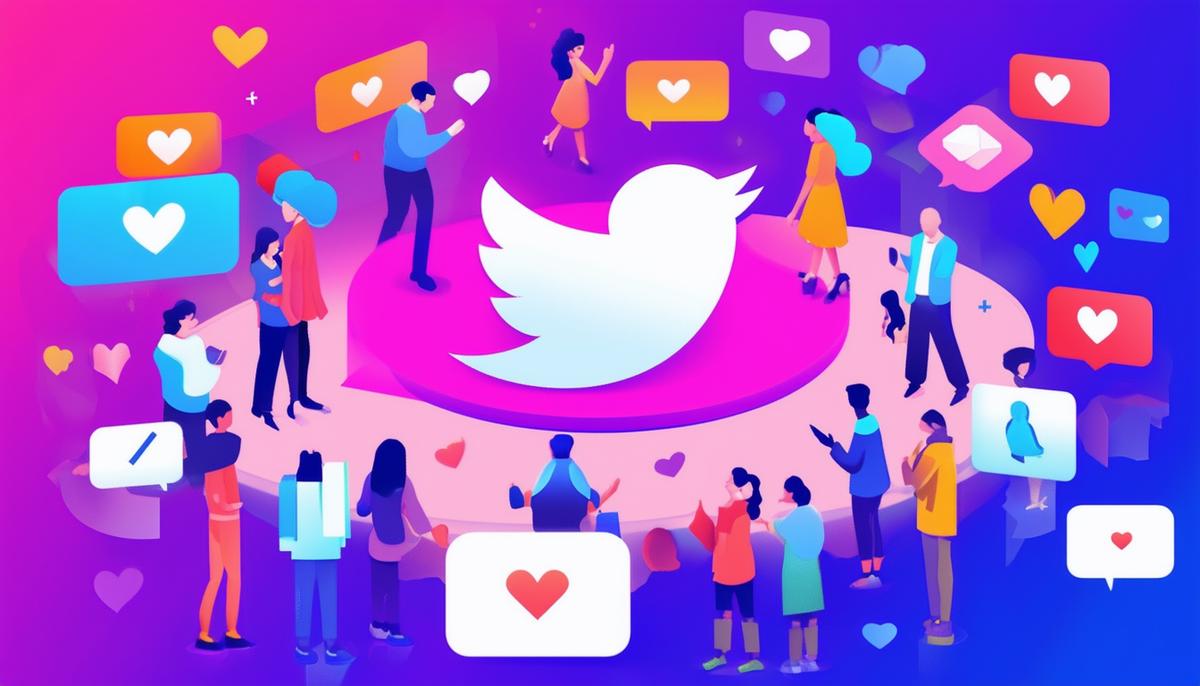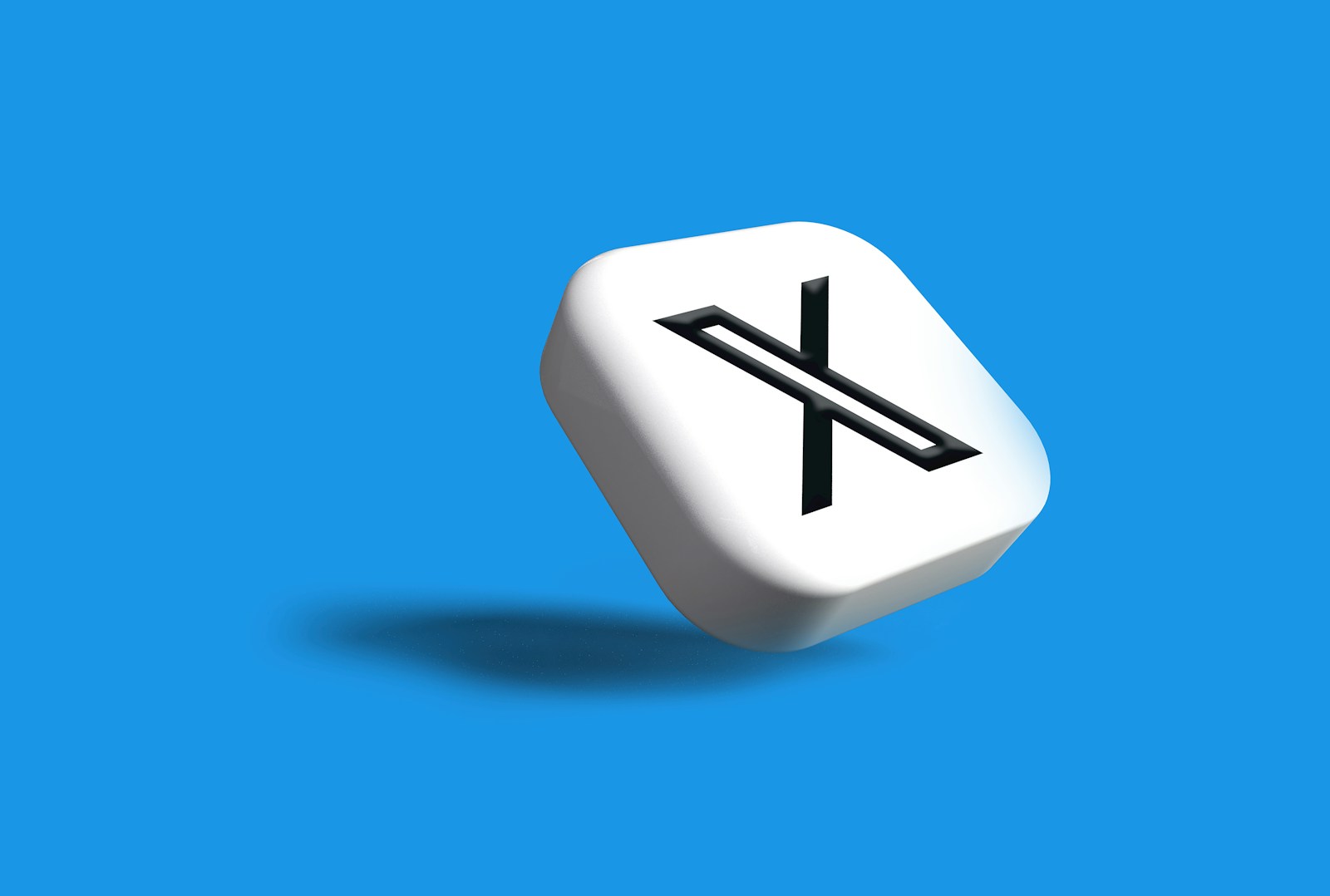Understanding Twitter Engagement
Twitter engagement extends beyond follower count to encompass interactions with your content. Engagement includes likes, retweets, replies, mentions, and link clicks. These elements show how your audience connects with your posts.

Key components of Twitter engagement:
- Likes: Indicate appreciation for your tweet
- Retweets: Amplify your reach by broadcasting your message to others’ followers
- Replies: Fuel conversations, allowing direct feedback and dialogue
- Mentions: Put you in the spotlight when users include your @username
- Link clicks: Show interest in your external content
These components collectively reflect the popularity and reach of your content. High engagement means your content resonates with your audience, prompting them to interact rather than scroll past.
Twitter engagement is crucial for brand growth and visibility due to the platform’s algorithm. Tweets with high engagement are more likely to appear in more feeds, increasing your content’s exposure.
For example, Wendy’s has mastered engagement by blending humor with timely replies. Similarly, brands like Netflix use captivating visuals and witty text to engage their audience.
Tweets with images receive 313% more engagement than those without, and videos can drive even higher numbers.
Brands incorporate eye-catching visuals and videos to make their tweets more engaging. Twitter polls invite direct audience participation and provide valuable insights into customer preferences. Using trending hashtags can enhance visibility, as seen with Apple’s #ShotOniPhone campaign.
Strong Twitter engagement can foster a devoted community around your brand, encourage organic growth, and amplify your message across the platform.
Measuring Twitter Engagement
Measuring Twitter engagement involves tracking metrics that reveal how your audience interacts with your content. This helps refine strategies and enhance visibility.
Twitter’s native analytics provide comprehensive insights. The dashboard offers data on tweet impressions, engagement rates, and more. Impressions indicate how many times your tweet was seen, while engagements encompass actions like likes, retweets, and replies.
Engagement rate is calculated by dividing total engagements by impressions and multiplying by 100. For example:
(100 engagements / 2000 impressions) * 100 = 5% engagement rate
Generally, an engagement rate above 0.5% is desirable.
Third-party tools like Hootsuite, Sprout Social, and Buffer offer additional insights and customizable reports. These tools help track engagement trends over time and optimize posting schedules.
The engagement ratio, calculated by dividing total engagements by follower count and multiplying by 100, measures influence relative to followers. For instance:
(1,000 interactions / 10,000 followers) * 100 = 10% engagement ratio
Engagement ratios of 1% to 3% are considered good.
Google Analytics can track off-platform engagement by using UTM parameters for links shared on Twitter. This provides insights on how social media efforts translate into web activity and conversions.
Industry benchmarks for engagement rates:
| Industry | Engagement Rate Range |
|---|---|
| Media & entertainment | 0.04% – 1.99% |
| Technology and software | 0.09% – 1.3% |
| Retail and consumer goods | 0.03% – 1.5% |
By analyzing various metrics and using a combination of native and third-party tools, you can refine your social media strategy to foster stronger connections with your audience and achieve your brand’s objectives on Twitter.
Effective Timing Strategies
Effective timing strategies are crucial in boosting Twitter engagement, ensuring your tweets reach your audience when they’re most active and receptive.
General research suggests optimal posting times for most industries fall between 9 AM to 3 PM, Monday to Friday. Engagement rates are especially high around noon and 5 PM. However, industry-specific data varies:
- B2B: 11 AM to 1 PM on weekdays
- B2C: 12 PM to 1 PM on weekdays
- Media and Entertainment: Evenings and weekends
- Tech Industry: 2 PM to 4 PM
To find optimal times for your audience:
- Analyze Historical Data: Use Twitter Analytics to identify patterns in your past tweet engagements.
- Utilize Audience Insights: Gather information about your followers’ demographics and locations to adjust posting times accordingly.
- Monitor Real-Time Performance: Use tools like Hootsuite and Sprout Social to adjust your strategy based on current engagement trends.
- Experiment and Optimize: Conduct A/B testing with similar content at different times and measure engagement levels.
- Engage During Peak Times: Respond to comments and mentions in real-time to foster a more interactive presence.
Consider posting 3-7 tweets per day, spread across peak times, to balance engagement with audience tolerance. Regularly reassess and fine-tune your posting times using fresh analytics to ensure your content reaches your audience when they’re most likely to engage.
Using Visuals and Multimedia
Visuals and multimedia can significantly improve Twitter engagement. Adding images, GIFs, videos, and other multimedia elements to your tweets can grab attention, increase interactions, and help your content stand out in a busy feed.
Data shows that tweets with multimedia perform better than text-only posts. Consider these statistics:
- Tweets with images generate 313% more engagement than those without
- GIFs in tweets can boost engagement by 55%
- Videos receive 10 times more engagement compared to those lacking visual content
Best Practices for Visual Content
- Use High-Quality Images: Ensure your images are clear, vibrant, and relevant to the tweet’s message.
- Leverage Infographics and Data Visualizations: Make complex information easily digestible and shareable.
- Utilize GIFs to Add Personality: Inject humor and relatability into your tweets.
- Optimize Video Content:
- Keep videos short and engaging
- Use captions for viewers watching on mute
- Highlight key messages with text overlays
- Consider going live for real-time interaction
- Create Visual Consistency: Establish a cohesive visual identity aligned with your brand.
- Showcase User-Generated Content: Encourage followers to share content using a branded hashtag.
- Incorporate Visuals into Polls: Make polls more appealing and increase participation rates.
- Experiment with Twitter Fleets: Share temporary content for quick updates and sneak peeks.
Pro Tip: Use tools like Twitter Analytics to track the performance of tweets with multimedia versus text-only tweets. Continuously adapt your strategy based on engagement metrics and audience feedback.
By integrating visuals and multimedia into your Twitter strategy, you can create a dynamic and engaging presence that captivates and resonates with your audience.
Engaging with Audience Content
Engaging with audience content is crucial for meaningful Twitter engagement. It’s about fostering conversations and building relationships, not just sharing your own content.
Effective Engagement Strategies
- Reply to Replies: Address users by name, ask follow-up questions, and provide thoughtful answers.
- Retweeting User Content: Show appreciation and expand your reach by sharing relevant follower content.
- Participating in Trending Conversations: Join trending discussions to boost visibility and engagement.
Building Relationships Through Active Communication
Cultivate a community through consistent and active engagement:
- Interact with your audience regularly
- Listen actively to what your audience is saying
- Show empathy in your responses
- Personalize your interactions
- Encourage and reward user-generated content
The Importance of Responsiveness
Being responsive demonstrates that you’re actively listening and willing to engage. Quick, thoughtful responses can enhance user experience and foster a sense of community.
“Responsiveness is the key to building trust and loyalty on social media.” – Social Media Today
To improve responsiveness:
- Set up notifications for mentions, direct messages, and replies
- Consider having a dedicated team to manage your Twitter account
- Prioritize addressing questions and complaints
- Use Twitter tools like TweetDeck or Sprout Social for comprehensive social media management
Engaging with audience content on Twitter is about fostering genuine connections and building a community around your brand. By actively communicating and being consistently responsive, you create an interactive, dynamic presence that leads to increased engagement, deeper relationships, and organic growth on the platform.
Leveraging Trending Topics and Hashtags
Using trending topics and hashtags effectively can boost your visibility and engagement on Twitter. Here’s how to use these tools for maximum impact:
Keep an eye on the “Trending” section on Twitter regularly. This shows what the Twitterverse is buzzing about, allowing you to join larger conversations and increase your chances of being seen by a broader audience. Tools like TweetDeck and Hootsuite can help you monitor these trends effectively.
Here’s the process:
- Set Up Keyword Streams: Use platforms like TweetDeck to follow specific keywords relevant to your industry.
- Engage Promptly: Timing is crucial. Engage with trending topics as soon as you spot them.
- Add Value: Ensure your tweets contribute meaningfully to the conversation.
Creating and promoting branded hashtags can amplify your reach. Here are best practices:
- Keep It Simple and Relevant: A good branded hashtag should be easy to remember and represent your campaign or brand clearly.
- Promote Consistently: Incorporate your branded hashtag across all marketing channels.
- Encourage User Participation: Motivate your audience to use your branded hashtag through engaging challenges, contests, or prompts.
When using hashtags – trending or branded – adhere to these best practices:
- Limit the Number of Hashtags: Tweets with one or two hashtags have higher engagement rates.
- Use Both Broad and Niche Hashtags: Balance between popular and specific hashtags to maximize reach and engagement.
- Be Mindful of Context: Ensure your hashtags are relevant to the content of your tweet.
Here’s a hypothetical example of a successful implementation:
Case Study: FitnessPlus
FitnessPlus, a health and wellness brand, leveraged trending topics and hashtags to boost engagement around a new product launch: a smart fitness tracker. They introduced a branded hashtag #FitPlusTracker and timed their campaign to coincide with the trending #FitnessFriday.
Their strategy included:
- Timing tweets for peak engagement periods
- Using multimedia content to showcase the product
- Creating interactive polls
- Encouraging user-generated content through a contest
- Promoting across multiple channels
By combining trending hashtags with their branded hashtag in a comprehensive, multimedia-rich campaign, FitnessPlus saw increased engagement rates and successfully amplified their new product’s visibility.
In summary, leveraging trending topics and hashtags effectively involves observing Twitter trends, making timely and relevant contributions, and strategically using branded hashtags. Combine these with engaging content and consistent multichannel promotion to elevate your Twitter presence.
Creating Interactive Content
Interactive content on Twitter can boost engagement and foster a deeper connection with your audience. Let’s explore effective types of interactive content and how to use them.
Polls are a simple yet effective form of interactive content. They allow followers to express opinions quickly, providing immediate feedback and engagement. For example, a tech company might ask, “Which feature are you most excited about in our new product? A, B, or C?”
Contests can vastly increase engagement by tapping into users’ competitive spirit. They can range from simple retweet-to-win campaigns to more elaborate contests requiring users to submit content. For instance, a fashion brand could ask followers to post pictures wearing their products with a specific hashtag, then select winners from those posts.
Giveaways are popular for driving engagement. They create a win-win situation where users have a chance to win something valuable, and brands achieve higher visibility and interaction rates. The key is ensuring the prize is enticing enough to motivate participation.
When creating interactive content, follow these best practices:
- Keep It Simple: Make participation easy. For polls, keep options clear and limited. For contests and giveaways, ensure entry steps are straightforward.
- Align with Your Brand Goals: Ensure your interactive content reflects your brand’s values and messaging.
- Set Clear Rules and Guidelines: Be transparent about how winners are chosen, contest duration, and any restrictions.
- Monitor and Engage: Actively interact with participants by liking, retweeting, and replying to keep momentum going.
- Promote Across Channels: Share your interactive content across all your social media platforms, website, and email newsletters for maximum reach.
- Analyze Results: Use Twitter analytics and other tools to measure engagement, reach, and conversion rates. Use this data to inform future campaigns.
By implementing these strategies, you can create interactive content that encourages active participation and builds a stronger community. Each campaign provides valuable insights, helping you continuously improve and sustain success on Twitter.
Ultimately, the essence of Twitter engagement lies in creating meaningful interactions and fostering a sense of community. By understanding and utilizing various engagement strategies, you can build stronger connections with your audience, driving both visibility and growth for your brand.



